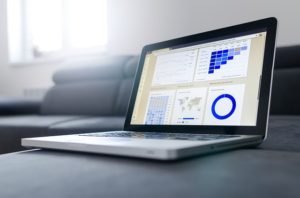Spring denotes new growth, fresh starts, and spring cleaning. Why not apply these ideas to your sales so they can blossom along with spring flowers? Here are six ideas to put the spring into your sales. Read more
 1. Spring Cleaning Sales
1. Spring Cleaning Sales
Get rid of old inventory by having a spring sale that will clean out your closets and put some money in your account. Look through your items for sale and find the ones that haven’t moved like you expected. Mark them down and move them out.
2. New Items and Services from Customer Ideas
Now that you’ve gotten rid of the old stuff, you have room for new. If you’re not sure what your clients want or need, ask. Use Survey Monkey to find out what your clients can use. If you don’t have what they want, make it, buy it, or partner with someone who does. Then let everyone know, “based on popular demand” of course, that you have new items for sale just in time for spring.
What questions should you ask in your survey? Try questions like these to draw out your customers’ needs and wishes and to discover any shortcomings you might have not known about:
- What items/services are on your wish list that you’d like us to stock/provide?
- How do you currently use our services/products?
- What do you wish our items accomplished that they don’t now?
- How would you recommend we expand our selections?
- What do you wish we did better?
3. The Old “Fries with Your Burger” Upsell
Waitpersons offer desserts and appetizers, office supply staff offer cables and accessories with hardware purchases, and software vendors offer the next level package. Almost every business practices a form of upsell these days, so if you don’t, you’ve got a new opportunity right here.
Dust off your old upsell procedures and try these ideas to rejuvenate your upsells:
- Re-visit your inventory to pair complementary items for upsell potential.
- Retrain your staff for upsell language at the time of sale.
- Re-package like items to offer more bundles and groups.
4. New Prices
When is the last time you’ve raised your prices? If it’s been a while, then it’s a great opportunity to increase revenue with little additional effort.
5. Spread the Word with Spring Samples
Samples can help get your product or service into the hands of many potential buyers. Buyers can better experience your product and reduce their perceived risk.
Not all businesses can provide samples, but there is always the next best thing. Where your product is not consumable, you can sometimes provide a portion of the product, such as a carpet sample, wallpaper swatch, or floor tile. With retail clothing, pictures will have to do. With books or courses, you can provide a sample chapter or a demo video. And with services, case studies or proof of concept will suffice.
6. Offer a Customer Reward Program
Put together a program to reward your most loyal clients and to make them even more loyal to you. Some of the perks could include monthly gifts, priority service, an exclusive event, and/or discounts. The price can be structured as a membership fee, retainer, or package price. Increasing contact, benefits, and communication with these clients is always a good investment.
Try one of these six ideas to put the spring in your sales this season.



